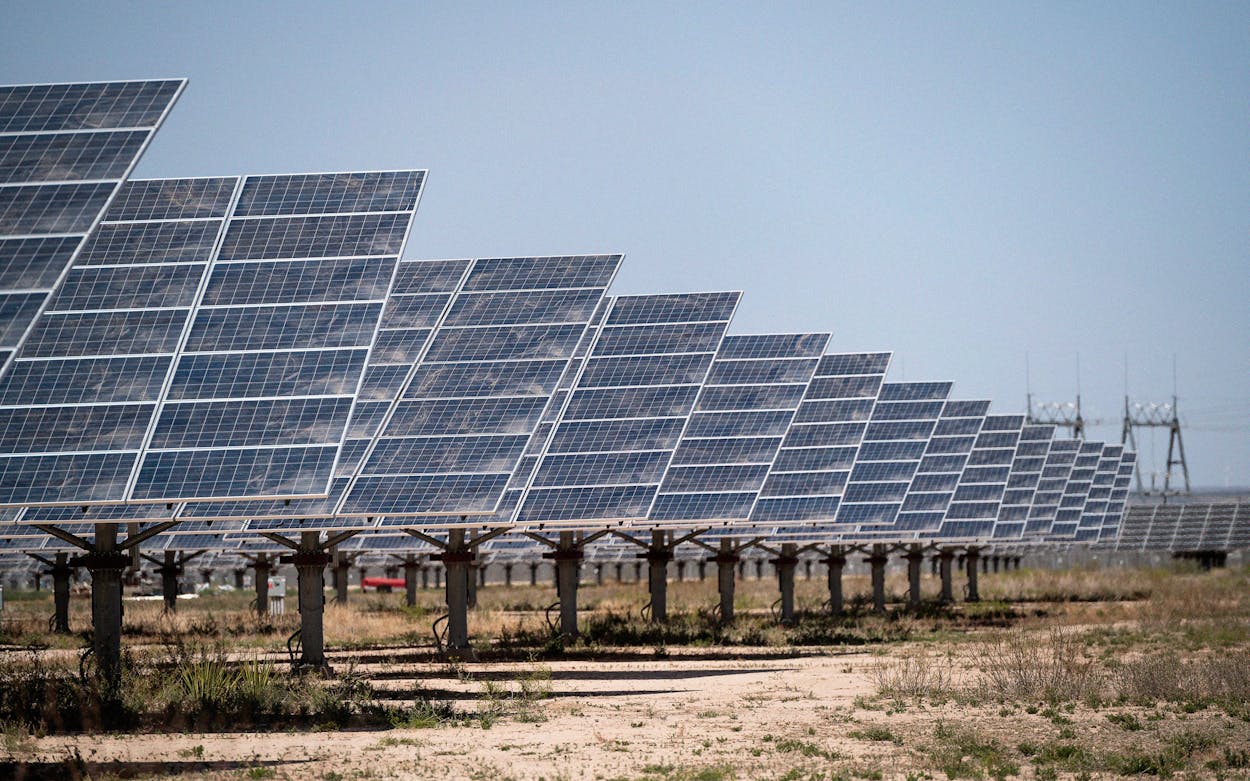Under a blue sky, in a former cornfield on the outskirts of San Antonio, a group of local and state officials once gathered to inaugurate the state’s first large-scale solar farm. “I can promise you it won’t be the last,” Senator John Cornyn declared. It was an epic understatement.
That installation, the Blue Wing Solar Project, can generate about 14 megawatts. Thirteen years later, there are about 12,600 megawatts worth of solar farms available on the state’s main power grid. That’s enough to keep the air conditioning cooling more than 2.5 million Texan homes. The amount of available solar energy has nearly tripled in the past three years, and there are thousands more megawatts worth of solar projects in various stages of development.
Much like last summer, solar electricity has been critical for keeping the lights on throughout Texas the past few days. It has been a workhorse during the afternoon hours, fulfilling more than 15 percent of the state’s power needs during some of the most critical periods. Natural gas and wind still contribute a greater share, so solar can’t solely be credited with saving our bacon during this first summer heat wave. But when it’s so hot out that the bacon will sizzle on the sidewalk, the sun’s largesse has played a key role in preventing brownouts.
“The same sun that heats up our buildings and drives our need for AC is the same sun that makes electricity with solar panels. It lines up pretty well,” says Josh Rhodes, a research scientist at the University of Texas at Austin. By contrast, the wind tends to die down on hot afternoons, as well as in the late summer, when temperatures peak. So if Texas didn’t have as much solar power, we’d have to rely more on older, inefficient natural gas plants that operate only during periods of peak demand. We’d risk pushing them to the edge of their capacity and seeing them break down for days or weeks. “Having solar provide during the hottest parts of the day is allowing our thermal fleet to not run itself into the ground as fast,” Rhodes says. It’s also saving Texans money—keeping a lid on electricity costs by replacing the most expensive-to-run gas-powered plants with relatively inexpensive solar.
Maybe someone should tell the state legislature about the vital role being played by wind and solar energy. The Republicans who call the shots under the dome all but declared war on renewables earlier this year. They proposed a bill that would have created a new layer of state approval for all new wind and solar farms. It passed the state Senate before dying in the House. (In a sign of how far the Texas Republican party has shifted, Senator Cornyn said at the ribbon cutting for Blue Wing Solar in 2010 that Texas has “thoroughly embraced other alternative forms” of energy, as it has embraced oil and gas.)
The rapid growth of solar has also cut into the need for the state’s surviving coal plants, yielding benefits to the air we breathe. “Texas is the largest emitter of greenhouse gases in the country, and our power plants release not just more carbon dioxide but also more air pollutants than those in any other state,” says Daniel Cohan, associate professor of environmental engineering at Rice University. “With a couple more years of growth, solar may obliterate the business model for coal in Texas.”
On Wednesday, in the critical afternoon hours, as temperatures in all of the major metros neared or reached triple digits, solar generated about 12 percent of the state’s power needs. This was about the same as coal, though well behind wind (25 percent) and natural gas (43 percent.) Texas is and remains a state dependent on fossil fuels, but, more and more, the lone star in our solar system is energizing the Lone Star State.
- More About:
- Politics & Policy
- Energy








